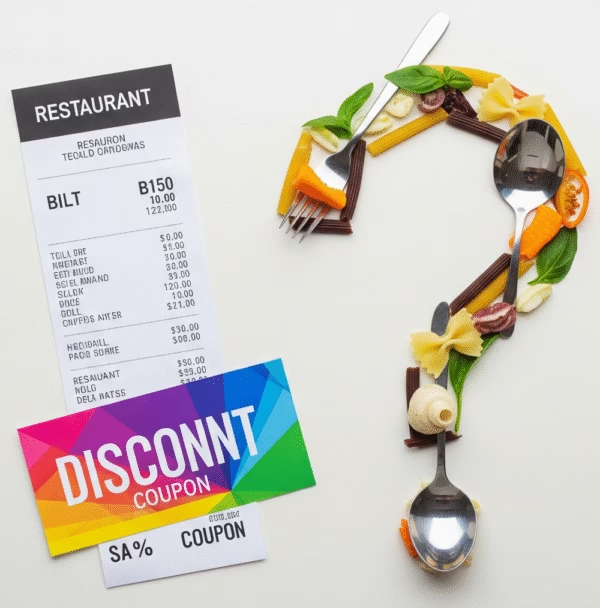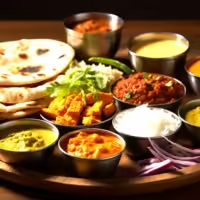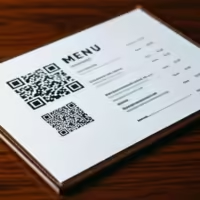
Posted by Reviewtale
- Jun 25, 2025
- 259
- 0
The Truth Behind Restaurant Discounts: A Smart Marketing Strategy or a Pricing Illusion?

Every business strives for success and growth, and achieving that is impossible without proper marketing strategies. Take the restaurant industry as an example—once heavily reliant on word-of-mouth, becoming a major player in the market used to be a time-consuming process.
However, in today’s digital age, restaurants are embracing a wide range of digital marketing strategies to boost visibility and customer engagement. These include email marketing, SMS marketing, WhatsApp marketing, social media marketing, influencer marketing, customer reviews, delivery service partnerships, and much more. Additionally, many restaurants offer discounts or coupons to attract and retain their customer base.
This brings us to a crucial question: Which strategy works best for a restaurant? Or how can a restaurant attract more customers?
While businesses implement various tactics to engage their audience, it’s ultimately the customer who decides what convinces them. In many cases, customers are driven more by discounts than by the food itself. They seek value in the form of promotions, not just the meal. As a result, restaurants have increasingly adopted discounts as a unique food promotion idea.
But this leads us to a deeper concern—how logical or ethical is this approach in the long run? Does constant discounting truly add value, or does it undermine the core offering of the business?
Let’s explore the role of discounts in modern restaurant marketing and whether they are a recipe for success or a shortcut with long-term consequences.
In today’s hyper-connected digital world, customers are constantly flooded with tempting food delivery offers. From ‘Buy 1 Get 1 Free‘ to flashy ‘Flat 50% OFF‘ deals, the food and beverage industry is leveraging discount strategies more than ever to pull in customers. These offers dominate our screens on food delivery apps and social media, making dining feel affordable and exciting. But beneath the surface, an important question arises: How are restaurants able to provide such large discounts and still stay afloat?
This article dives deep into the real economics of restaurant discounting, the psychology behind it, and what customers and food business owners alike should understand before being converted by seemingly irresistible deals.
Why Do Restaurants Offer Heavy Discounts?
Before exploring how these discounts work, it’s essential to understand why restaurants offer food deals in the first place. The answer is simple — to drive more customer traffic, increase order volume, and stay competitive.
In a saturated market, restaurants are always on the lookout for ways to stand out. Discounts serve as an easy attention-grabber and often lead to a spike in orders. Especially during off-peak hours or non-festive periods, deals help keep the kitchen running and ensure better utilization of resources. This approach holds genuine value in maintaining a balanced market. However, the rationale behind offering discounts throughout the year on certain delivery platforms remains unclear and warrants further examination.
Additionally, with the rise of food delivery apps and restaurant aggregator platforms, the fight to appear on the top search result or in promotional banners has only intensified. Discounts are now often a part of visibility packages offered to food outlets, making them a vital component of a restaurant’s digital marketing strategy.
The Psychology Behind Restaurant Deals
The human brain is wired to respond positively to the word “discount.” It triggers a feeling of urgency and excitement. Even a small percentage off the total bill can lead customers to perceive value and prompt quicker decision-making.
Restaurants use this to their advantage by employing techniques such as:
- Anchoring: Showing original high prices next to discounted ones makes the deal feel more valuable.
- Flash sales: Limited-time deals increase FOMO (fear of missing out).
- Free delivery offers: These reduce friction in the buying process and add convenience.
These tactics are often less about the real savings and more about creating a perception of value. For many, the sense of scoring a good deal is more satisfying than the meal itself.
How Do Restaurants Manage to Offer Huge Discounts?
This is where things get interesting. Unlike retail businesses that offer discounts to clear out excess stock or outdated inventory, restaurants deal in perishable goods that must be prepared fresh every day. There’s no inventory to move or shelf space to free up. So how do they do it?
Here are a few ways restaurants manage to offer heavy discounts without always running at a loss:
Price Padding
Some restaurants adopt a pricing tactic where they slightly increase the base price of menu items and then apply a discount to create the illusion of a better deal. For instance, a dish that originally costs Rs. 300 may be marked up to Rs. 500 and then promoted with a 40% discount. This brings the final price back to Rs. 300—the original amount—yet it gives customers the impression that they’re saving money. While this strategy may attract attention and boost short-term sales, it raises ethical concerns and can impact long-term customer trust if discovered.
Menu Engineering
High-margin items like beverages or side dishes often help balance out the loss incurred from discounted main courses. These items typically have lower food costs and higher markup potential, making them ideal for boosting overall profitability. Additionally, restaurants may strategically implement portion control and ingredient substitutions—such as using seasonal or locally sourced alternatives—to reduce expenses while maintaining the perceived value of the dish. These subtle adjustments allow restaurants to preserve their profit margins without compromising too much on customer satisfaction.
Commission Partnerships
Many food delivery platforms run shared discount campaigns in which the cost of the discount is divided between the restaurant and the platform itself. This collaborative approach reduces the financial burden on individual businesses, making it more appealing for restaurants to participate. By sharing the expense, platforms encourage more establishments to join promotional offers, helping to boost visibility and order volume while maintaining a level of profitability for the restaurants involved.
Marketing ROI
Many restaurants view discounting as a strategic form of advertising. Rather than investing heavily in traditional marketing channels, they leverage the visibility that discounts provide on delivery apps and digital platforms to attract new customers. The idea is to use the discounted offer as a hook—once a customer orders, enjoys the experience, and returns multiple times, their lifetime value (LTV) begins to outweigh the initial loss from the discount. In this way, the short-term sacrifice is seen as a long-term investment in customer acquisition and brand loyalty.
Loss Leader Strategy
Offering select items at a loss—commonly known as a loss leader strategy—is a well-established retail tactic that has found its place in the food service industry as well. By pricing a popular dish or item below cost, restaurants can attract more customers and drive traffic to their listings. Once the customer is engaged and ready to place an order, they are more likely to add additional items such as beverages, appetizers, or desserts. This upselling opportunity helps increase the average order value, ultimately compensating for the initial loss and potentially leading to higher overall profitability.
The Other Side: Is It Sustainable?
While discounts are effective in driving short-term gains, the long-term sustainability of frequent food offers remains questionable.
Some restaurants end up in a cycle of dependency, unable to return to regular pricing without losing customers who are now conditioned to expect discounts. This can:
- Eat into already thin profit margins
- Decrease perceived value of the food
- Lower quality to maintain costs
There’s also the danger of attracting price-sensitive customers who are unlikely to return without an offer — thus reducing customer loyalty.
For newer or smaller restaurants especially, this could lead to a false sense of growth and misaligned expectations.
My Honest Perspective
As a curious observer and a food industry reviewer, I’ve often wondered about the logic behind certain deep-discount offers. You open a food ordering app and see 50% off on your total bill, and it sounds like a dream. But is it?
Think about this: If a restaurant is offering 50% off, is it because the cost of raw materials dropped drastically? Did the government reduce taxes suddenly? Have the wages of kitchen staff or rent prices fallen?
In most cases, the answer is no. So where is this discount coming from?
What often happens behind the scenes is a mix of smart pricing adjustments, cross-selling, bundled costs, or the hope of customer retention. However, from the perspective of someone who values quality and fairness, this trend raises concerns.
Are we really paying less, or are we being made to feel like we’re saving money while still paying the real price — or more — through cleverly crafted deals?
This isn’t an attack on any business. Every restaurant must do what it takes to survive and grow. But as consumers, we should remain aware, informed, and thoughtful about our choices.
Discounts are tempting, but we shouldn’t let them cloud our judgment or affect the way we value food and the effort behind it.
A Better Way Forward for Restaurants
Restaurants can attract and retain customers without falling into the discount trap by focusing on:
- Loyalty programs: Rewarding frequent customers with points, perks, or exclusive experiences
- Seasonal menu innovation: Creating buzz with limited-edition or festival-themed offerings
- Superior customer service: Creating memorable dining experiences that people talk about and return for
- Community engagement: Hosting events, collaborating with local creators, and building local trust
These long-term strategies not only preserve profitability but also build stronger relationships with customers who value more than just the cheapest meal.
Conclusion
Discounts in the food industry are here to stay. They are effective, exciting, and often convenient. But they also come with hidden complexities — from price manipulation to long-term impact on business health.
As food lovers and conscious customers, let’s strive to look beyond the bright red discount banners and understand the real cost behind the convenience. And if you’re in the restaurant business, consider whether the short-term gain from discounts is worth the long-term trade-off.
Whether you’re a customer, a business owner, or just someone passionate about the food industry — the conversation around food discounting is worth having.
To sum up, it is fair to say that restaurants have every right to adopt innovative strategies to attract customers and ensure the sustainability of their business. They serve a vital role, especially during times when individuals are unable to prepare meals or access dining experiences on their own. Much like the hotel industry—which provides temporary accommodation for travellers who cannot establish residences everywhere—restaurants offer convenience, comfort, and service on demand.
That said, it is important for customers to view this dynamic from a balanced perspective. Just as they expect quality and value, they should also recognize the operational challenges faced by restaurants. So far, the exchange has been fair and logical. However, it becomes ethically questionable when businesses resort to offering discounts year-round as a tactic to gain traction.
This raises a critical self-reflective question: If I continue to offer discounts constantly, how will I sustain my business in the long run? Am I unintentionally planning for its closure? Sustainable growth must be built on value, transparency, and mutual understanding—not on short-term gimmicks.
To gain a deeper understanding of how discount strategies influence not just pricing but consumer perception, we encourage you to explore our related article, “The Hidden Costs of ‘Discounts’: How Ads Manipulate You.” It uncovers the subtle ways advertisements shape buying decisions and reveals the psychological tactics behind seemingly irresistible offers. If you’re curious about what really drives customer behaviour and the unseen impact on both businesses and consumers, this is a must-read companion to the topic.
FAQs
- Are restaurant discounts bad for business?
Not always, but over-reliance on discounts erodes profit margins and customer loyalty over time.
- Why do restaurants continue offering discounts if it’s not profitable?
Many feel pressured by competitor activity and aggregator platforms, or they use it to clear excess stock.
- What is a better alternative to discounts?
Experience-based marketing, loyalty programs, and value-based pricing can offer long-term gains.
- How do customers perceive restaurants always offering discounts?
They might perceive the restaurant as cheap or low quality, which harms brand value.
- Do discounts help attract new customers?
Yes, but they may not stay or return unless the food and service truly impress them.
- How can small restaurants compete without offering discounts?
By focusing on authenticity, customer service, storytelling, and using review platforms like Review Tale for visibility.
Recommended Posts
- Feb 1, 2025
- 349 read
How Behind-the-Scenes Food Content Boosts Visibility & Engagement Table of ContentsIntroductionThe Power...
Read Article- Jan 29, 2025
- 320 read
7 Effective Ways to Use Customer Reviews to Build Trust Table of...
Read Article- Jan 19, 2025
- 760 read
The Story Behind Your Business: How Sharing It Attracts Customers & Builds...
Read Article- Jan 18, 2025
- 497 read
Unforgettable Dining Experiences: How a Unique Selling Proposition Can Elevate Your Restaurant...
Read Article- Jan 16, 2025
- 1252 read
What Unique Aspects of Your Restaurant, Cloud Kitchen, or Café Set You...
Read Article- Jan 12, 2025
- 658 read
How to Remove Negative Reviews From Google? Negative reviews on Google can...
Read Article- Jan 3, 2025
- 343 read
Table of Contents IntroductionThe Origins of Fast FoodNutritional Myths and RealitiesConvenience vs....
Read Article- Dec 25, 2024
- 342 read
6 Essential Steps for Restaurants: Masterfully Choose the Right Target Customers Choosing...
Read Article- Dec 5, 2024
- 744 read
10 Powerful Tips for Innovative Menu Design: Trends You Need to Know...
Read Article- Nov 16, 2024
- 316 read
Tips and Tricks to Optimize Your Restaurant Profile: Improve Your Online Visibility...
Read Article










